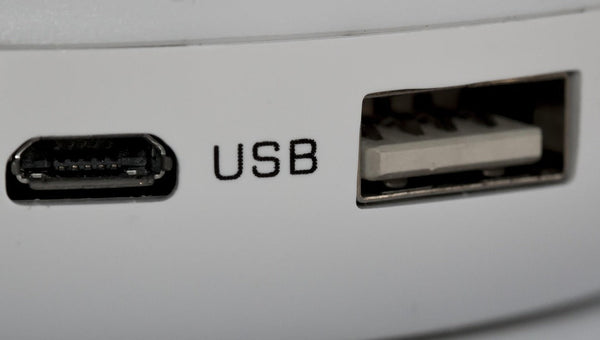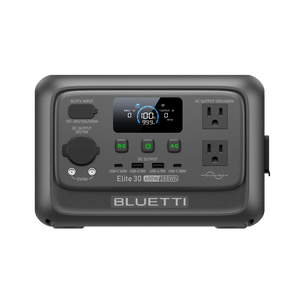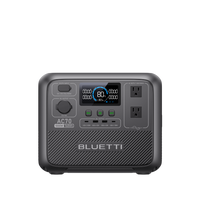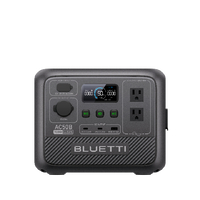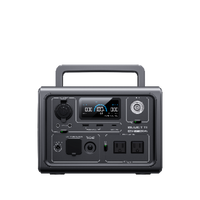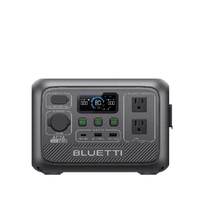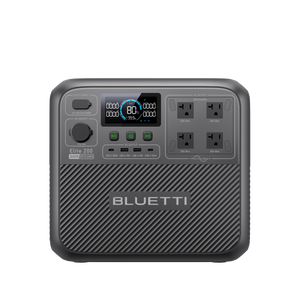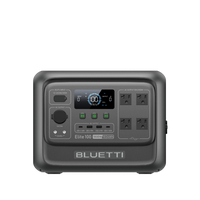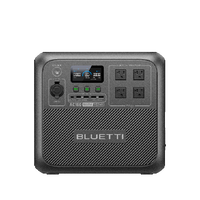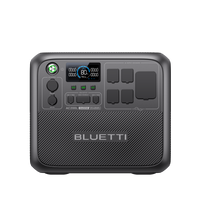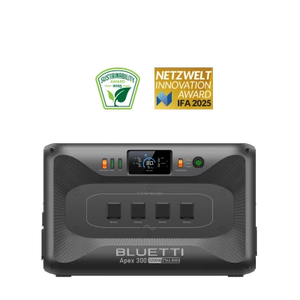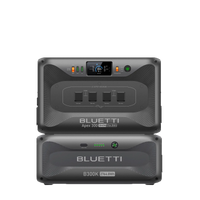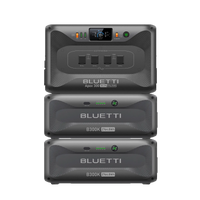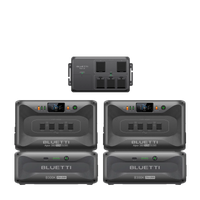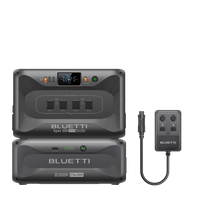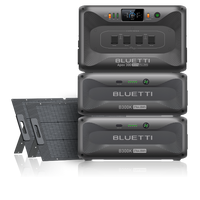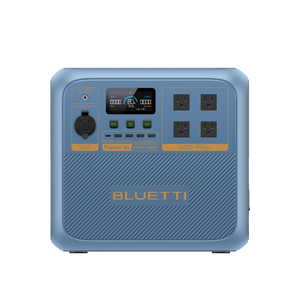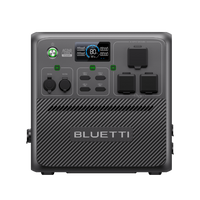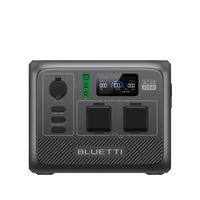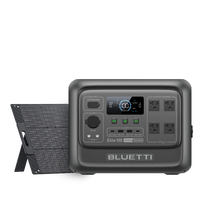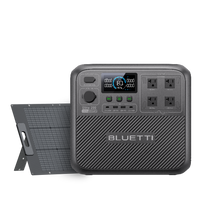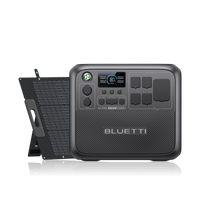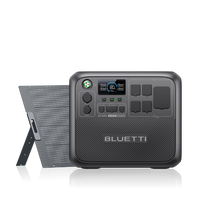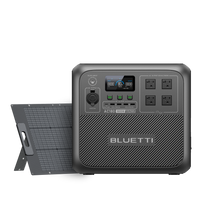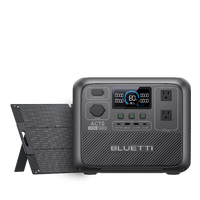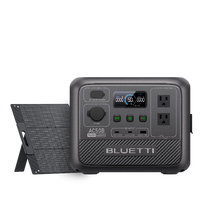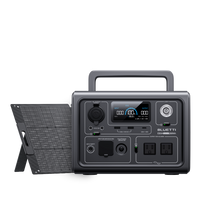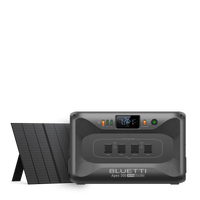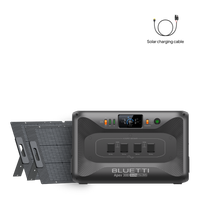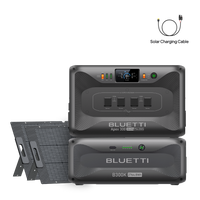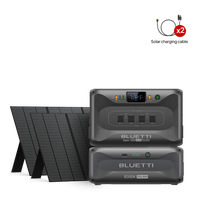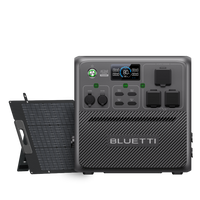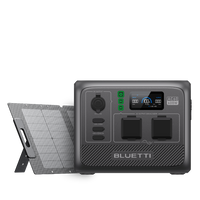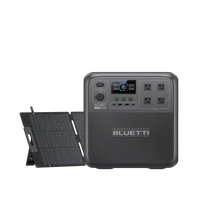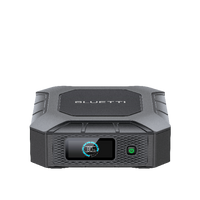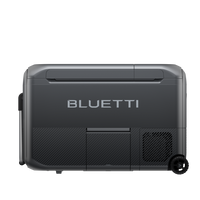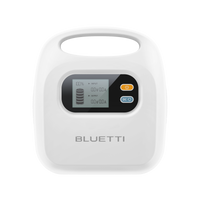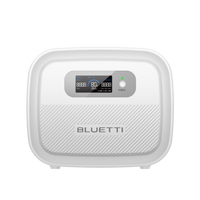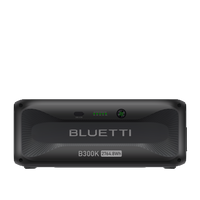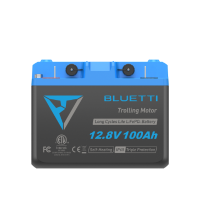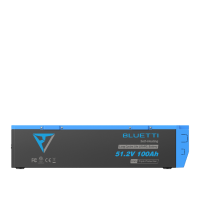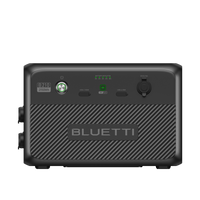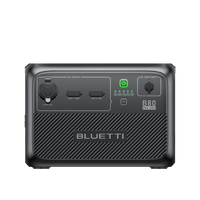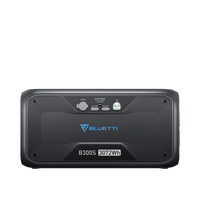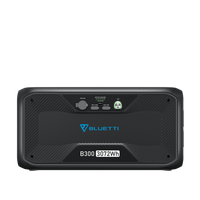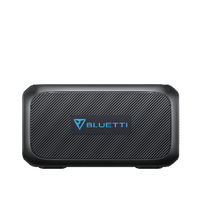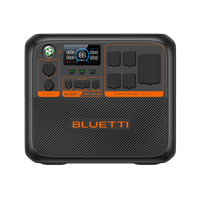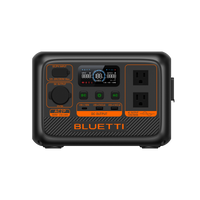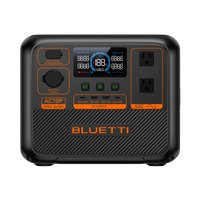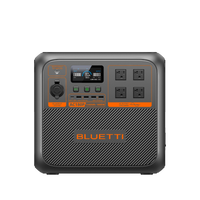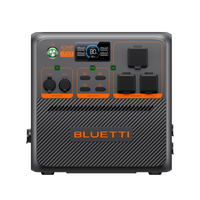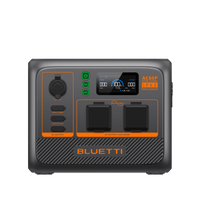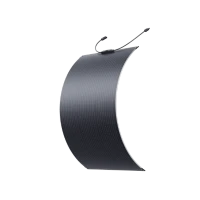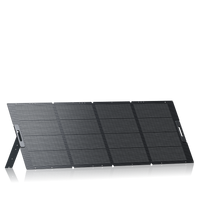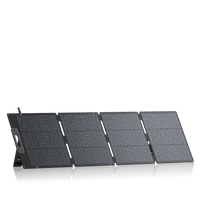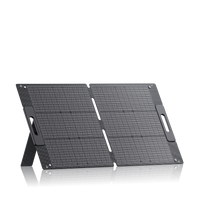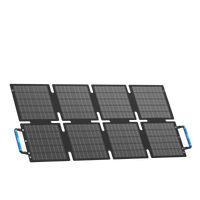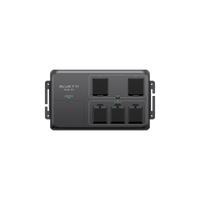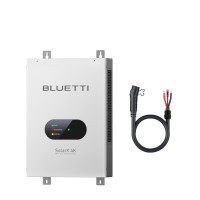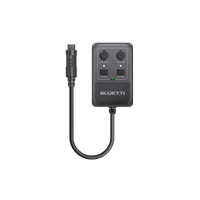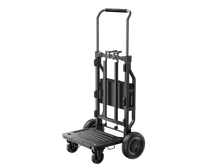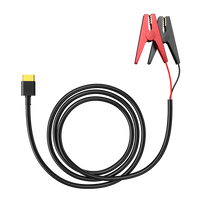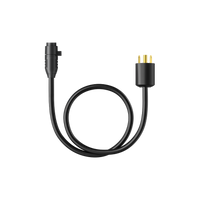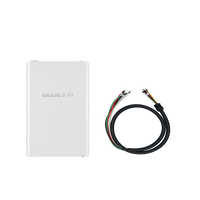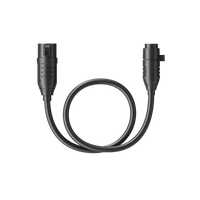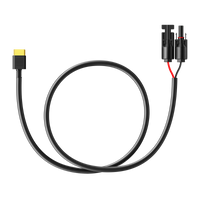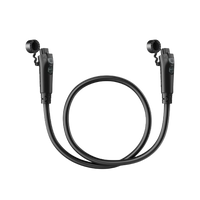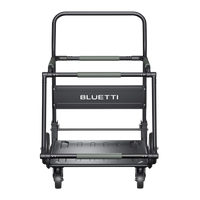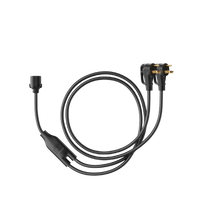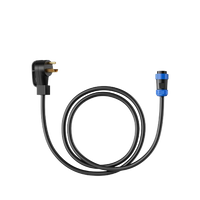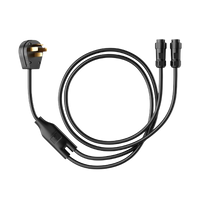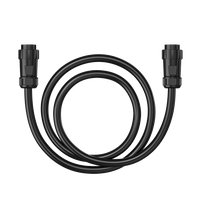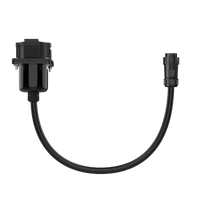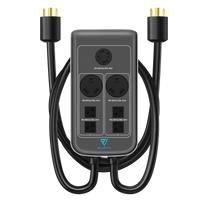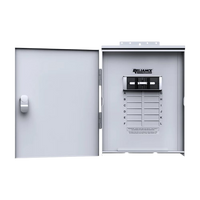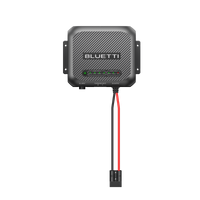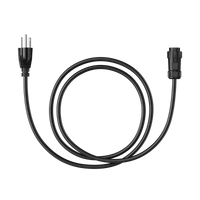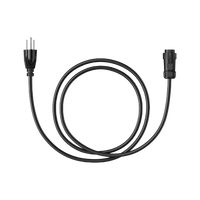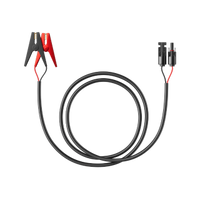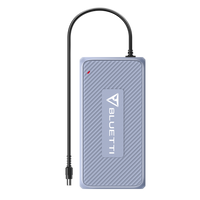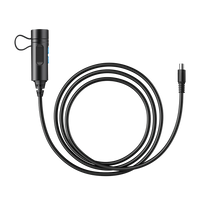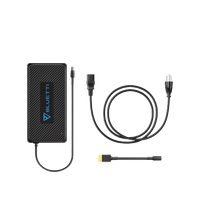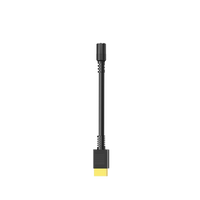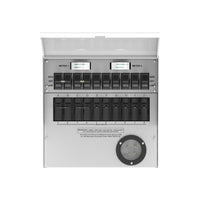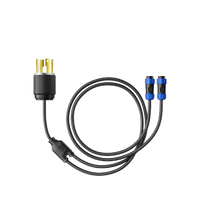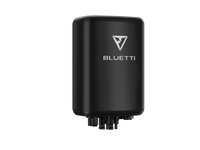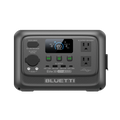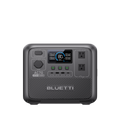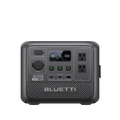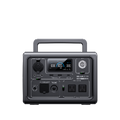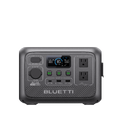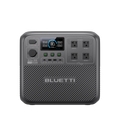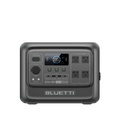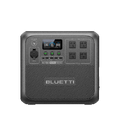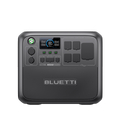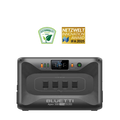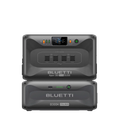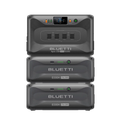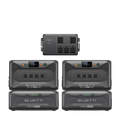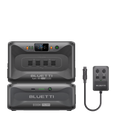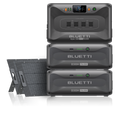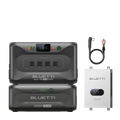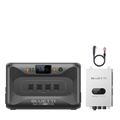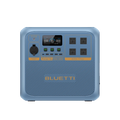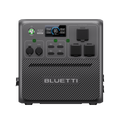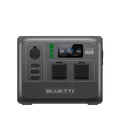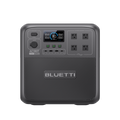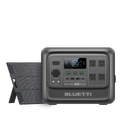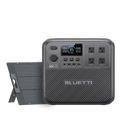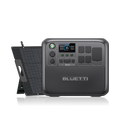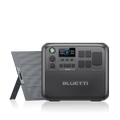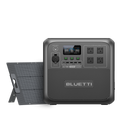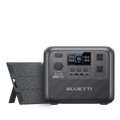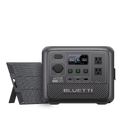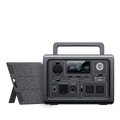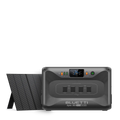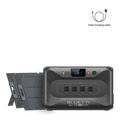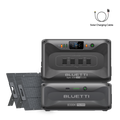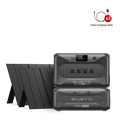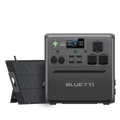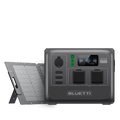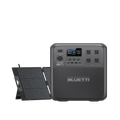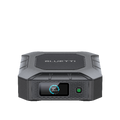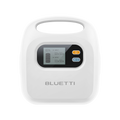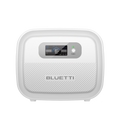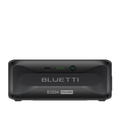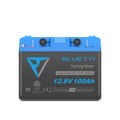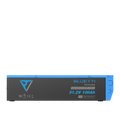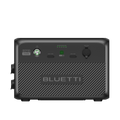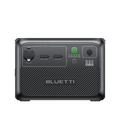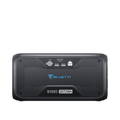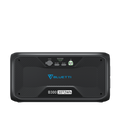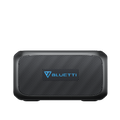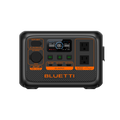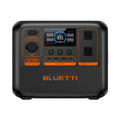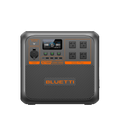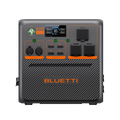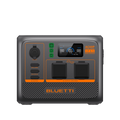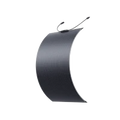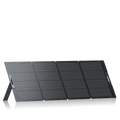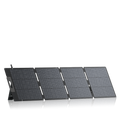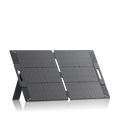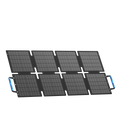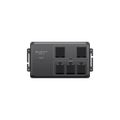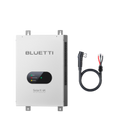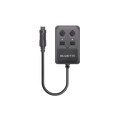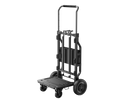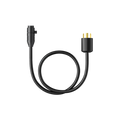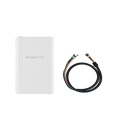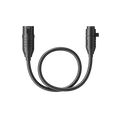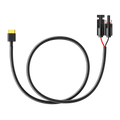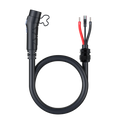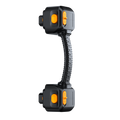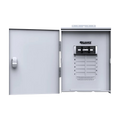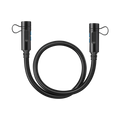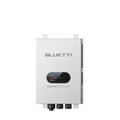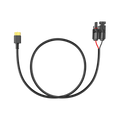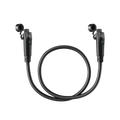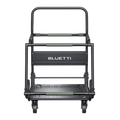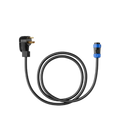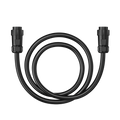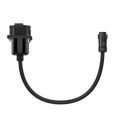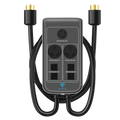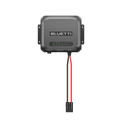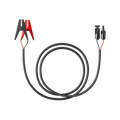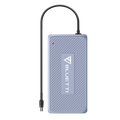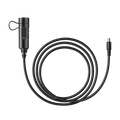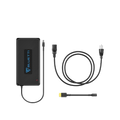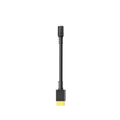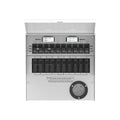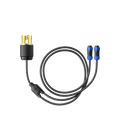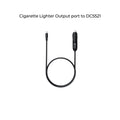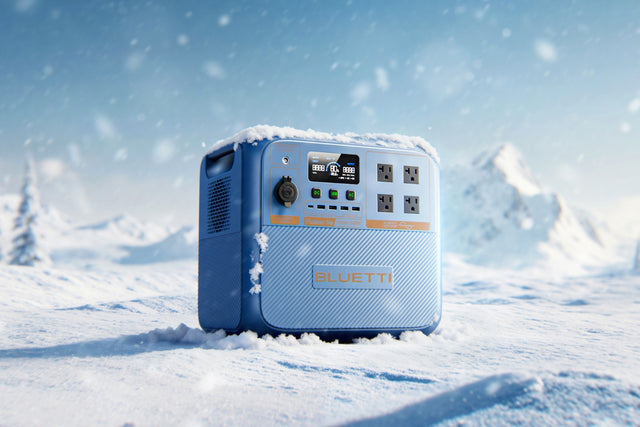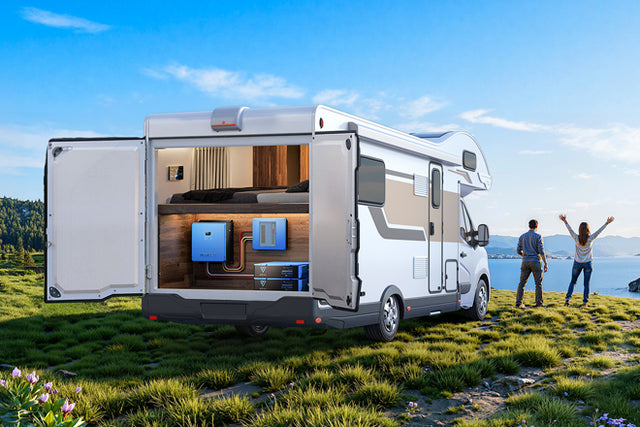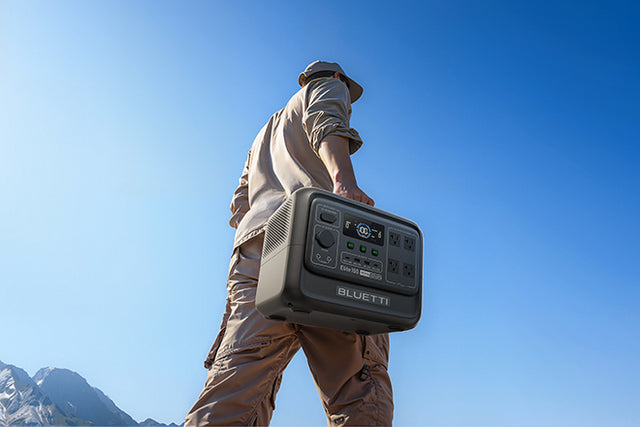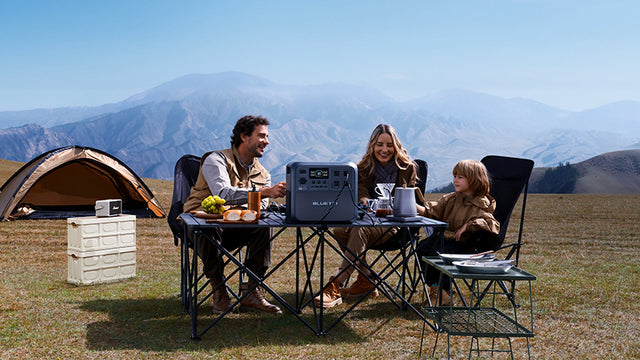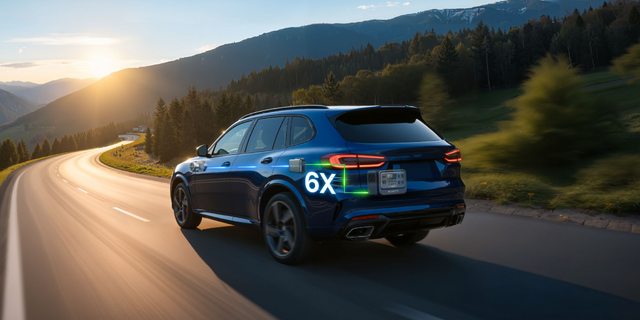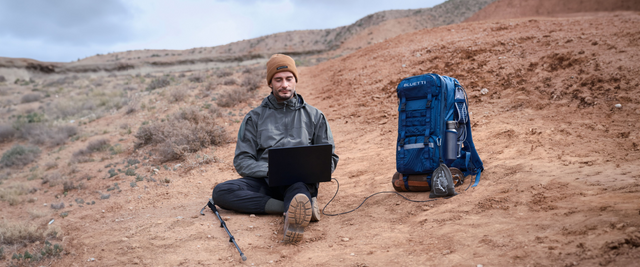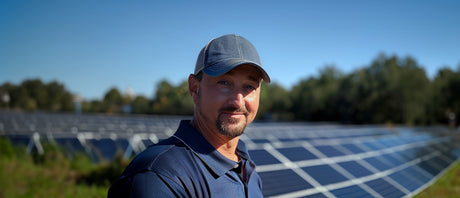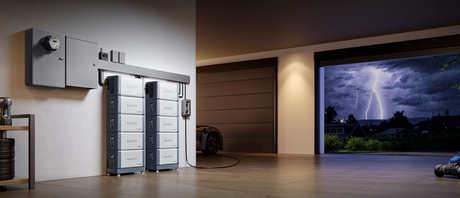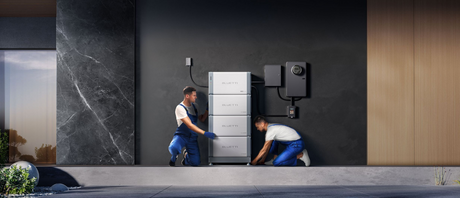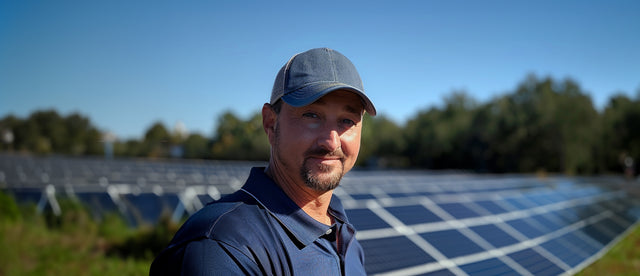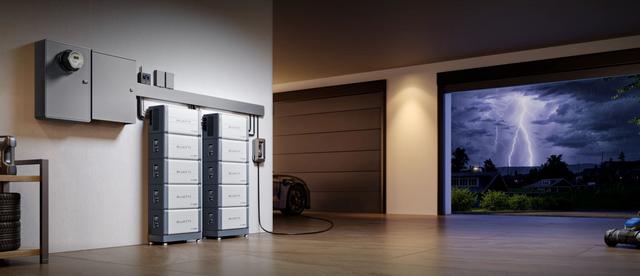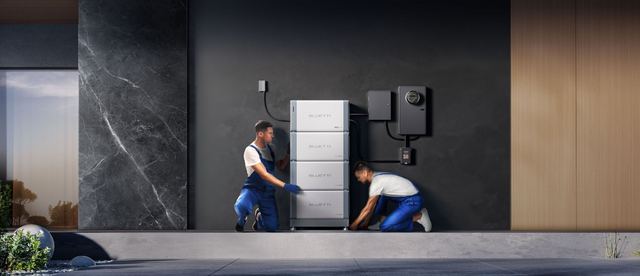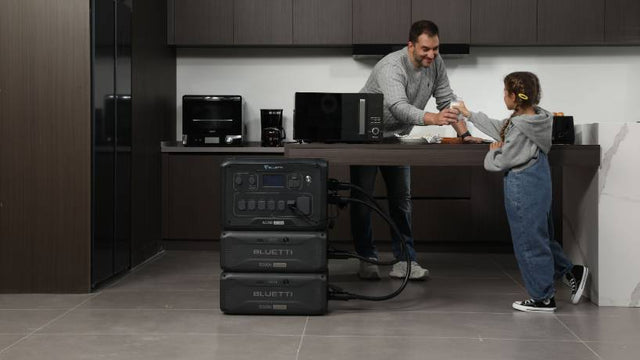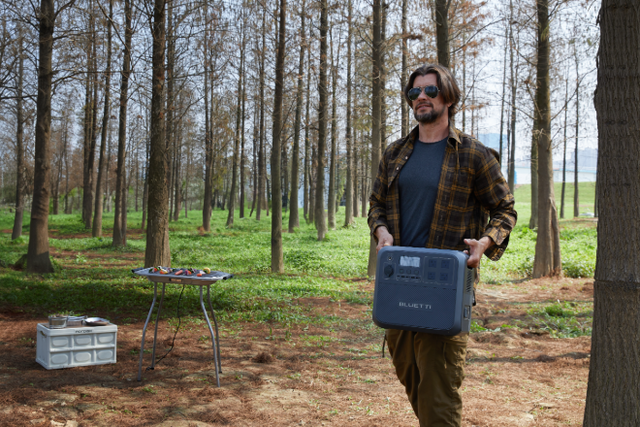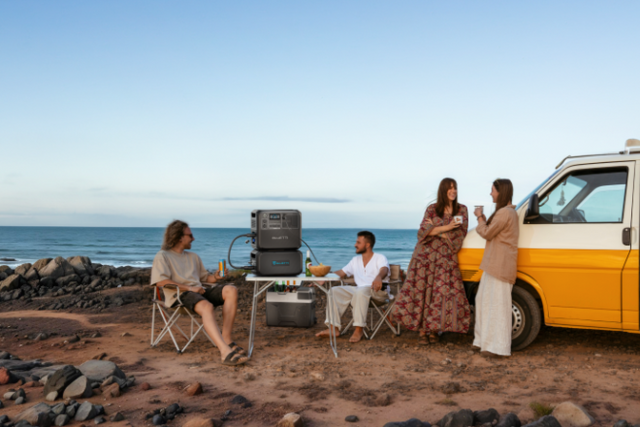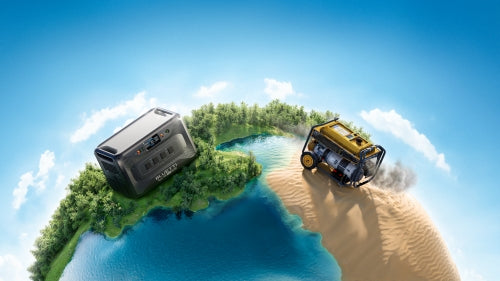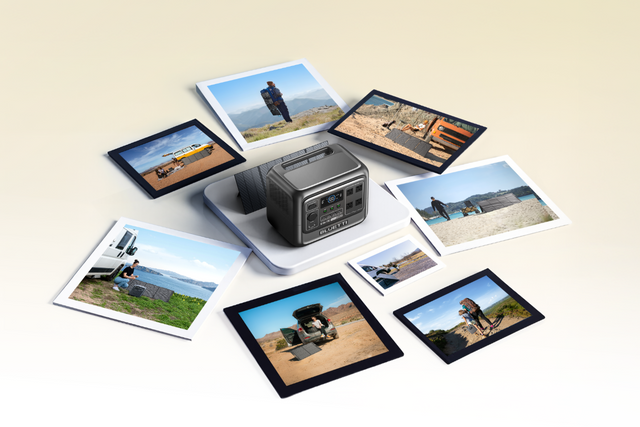Your cart is empty
Shop our productsElectricity bills are no joke. If you've ever wondered how much wattage your washing machine actually runs, you're not alone. Figuring out the wattage is basically your golden ticket to saving cash, wasting less energy, and, maybe even prepping for that off-grid cabin dream. The thing is, not all washers are the same.
You've got front load vs. top load, or standard vs. high efficiency, and they all chow down on power a little differently. In this post, we'll share what "wattage" means, average washing machine wattage, and variables that affect the wattage. We'll also tell you what it'll cost you to run a washer, and how to run it off the grid. In addition, you'll get some real-life hacks to lower the power use!

What Is Wattage?
The wattage is the power a device consumes when it is in action. As an illustration, an appliance of 100W consumes 100 watts of power per hour. You may imagine it as water passing through the pipe. Pressure is called voltage, flow is called current, and the total amount of power in the flow is referred to as wattage. The formula is:
Watts (W) = Volts (V) × Amps (A)
As an example, an appliance pulling 1 amp out of a 120-volt wall socket is consuming 120 watts. Here is how:
120 × 1 = 120W
Why Wattage Matters?
#1: The Impact on Your Utility Bill
Your electric bill is based on kilowatt-hours (kWh), where one kilowatt-hour is the consumption of 1,000 watts in one hour. Here are examples of operating appliances at an expense of 15 cents per kilowatt hour:
Example 1: For a 10W LED running 10 hours:
- Energy Consumed= (10W ÷ 1000) × 10 hours = 0.1 kWh
- Expense= (0.1 kWh × $0.15) = 1.5 cents
Example 2: For a 1500W space heater running for 2 hours:
- Energy Consumed= (1500W ÷ 1000) × 2 hours = 3 kWh
- Expense= (3 kWh × $0.15) = 45 cents
Example 3: For the same 1500W heater running for 8 hours a day, every day for a month:
- Daily Energy Consumed= (1.5W × 8hrs) = 12 kWh
- Monthly Energy Consumed= (12 kW × 30 days) = 360 kWh
- Monthly Expense = (360 kW × $0.15) = $54
In simple words, large appliances like heaters, dryers, and ovens contribute to higher utility bills, specifically with prolonged use. Whereas the phone charger and LED bulbs cost less.
#2: Compatibility with Portable Power Stations & Solar Setups
If you're operating an appliance with a portable power station or a solar setup, like off-grid, you must know the station's wattage. Here's why:
-
Operating Power (Watts)
Every solar setup has a maximum restriction on how many watts it can provide, e.g., 300W, 1000W, 2000W, etc. For instance, a 300W station can recharge a 40W laptop. It won't, though, power up a 1200W coffee maker. So, get a strong power station of 1800W, and you could juice up a 1200W coffee maker and a 50W TV at one time.
-
Surge Power (Startup Spikes)
Some devices need extra power to start (like fridges or pumps). Power stations have a surge rating for this. For instance, a mini-fridge could only gobble up 80W while running. Yet, it might surge to 240W at start-up. Thus, you need a power station that's able to support the spikes.
-
Battery Capacity (Watt-Hours, Wh)
This tells you how long devices can run. Formula:
Runtime ≈ Wh rating ÷ device watts.
An example of this is the powering of a 30W TV by a 288Wh unit, which lasts about 9.6 hours. Real runtimes vary, but this is a good estimate.
-
Solar Charging
Solar panels recharge your power station. A 200W panel will charge quicker than a 100W panel. However, the station will only charge to its maximum input. You cannot damage it with a higher-watt panel, then.
What's the Average Washing Machine Wattage?
Washers are of many types, and that's why the average washing machine wattage varies per model. Here's how:
|
Washer Type |
Power Range (W) |
Average Power (W) |
Notes |
|
Front-Load Washers |
400–1,400 |
~700 |
Energy-saving, low water use, and higher power only when spinning. |
|
Top-Load Washers With Agitator |
500–1,800 |
~900 |
Sucks more energy due to the agitator sloshing water and clothes around. |
|
HE Top-Load With Impeller |
300–700 |
~500 |
Similar to front-loaders but high-efficiency, gentler, and gulp less water. |
|
Compact / Portable Washers |
100–300 |
~200 |
Small, low-power, for light loads, usable with household power or a portable station. |
But the wattage of a washing machine varies in every segment of the cycle. It doesn't stay the same. So, how many watts does a clothes washer use in each segment? Let's find out below:
The Key to Average Wattage of a Washer: It is All about the Cycle
The amount of power consumed by a washing machine is discernible by what the machine is doing. For example:
- Filling with Water: Very low (50–150W) as it's just the inlet valve working.
- Washing/Tumbling (Delicate): Low (300-500W) due to slow, gentle drum action.
- Washing/Agitating (Heavy Duty): Greater (500-1,000W) because the motor exerts greater effort with heavy loads.
- Draining: Low (100-200W) in case the pump is running only.
- Spinning: Peak (1,200-1,800W+), where the motor is most active spinning clothes at a high speed.
This difference in power consumption has real-world consequences on your utility bill and portable power station, provided you are using it to wash clothes. Here's how:
-
Utility Bill: Washing machines don't use peak power the whole cycle. If you run a one-hour load on a 500W machine, the cost is low:
- Energy Consumed: 500W ÷ 1000 × 1 hour = 0.5 kWh
- Expense (at $0.15/kWh): 0.5 kWh × $0.15 = 7.5 cents per load
-
Portable Power & Solar: The most important here is the peak wattage. A washer that has an average power of 700W and reaches a peak power of 1,500W may put a strain on a 1,000W power station. When operating a washer, you should examine the station's maximum wattage. Ascertain that its continuous power is greater than the average wattage of your washer, and its surge rating is also higher than the peak wattage of the washing machine.

Variables Affecting the Wattage of Washers
The wattage of the washing machine varies during the cycle, as you now know. But it's not only the segments in a cycle that affect its wattage. There are more variables involved, and understanding them can assist you with managing your energy consumption. They can also help you choose the right power source. Here are those variables:
-
Machine Size and Capacity
Machine size and capacity greatly affect power use. Washers of large sizes (5.0 cu. ft. or larger) require motors with higher strength to accommodate huge and heavy loads such as comforters. Therefore, they consume more watts in washing and spinning. Whereas smaller or compact models (under 4.5 cu. ft.) use weaker motors and therefore consume less power overall.
-
Cycle Selection and Settings
The cycle and settings you choose have a big impact on power use. Heating water uses the most energy. Cold washes only need the motor (~500W), while warm or hot washes can spike to 2,000W+ because of the heating element. Spin speed also matters.
Low spins (around 400 RPM) use less power, while high spins (1,200 RPM or more) can push the motor over 1,200W. Besides, soil level and fabric type affect energy use. Heavy-duty cycles with longer times and stronger agitation draw more power than quick or delicate washes.
-
Age and Technology
A washer's age and technology have a big role in power use. Older models (before 2000) tend to have brushed motors that are inefficient and waste more energy in the form of heat and noise. This is in direct contrast to modern high-efficiency devices, which have brushless or inverter-driven motors. These can regulate speed and power when required. Thus, the average wattage is kept significantly lower.
Additionally, look for motors with higher efficiency ratings under IEC standards, such as IE3 (premium efficiency) or IE4 (super-premium efficiency). These can reduce power consumption by 20-30% compared to lower-rated motors (like IE1 or IE2), especially in high-speed spin cycles or heavy loads.
-
Special Features and Add-ons
Extra features can raise a washer's power use, though usually not as much as the motor or heater. Steam functions add the most, using 1,000–1,500W to quickly create vapor. While recirculation pumps add about 50–150W. But sensors, control boards, and LED displays use very little, usually under 20W.
Many modern washers also feature sensory-load detection, using soil and load sensors to automatically adjust water levels, cycle length, and energy use based on the laundry's weight and dirtiness. This can cut power consumption by 10-20% per load compared to fixed settings, making them ideal for efficient off-grid operation.
Example of Two Different Wash Cycles on a Modern, High-Efficiency Machine
To understand how these factors add up, let's compare the wattage use of two different wash cycles on the same modern high-efficiency washer:
Scenario 1: Energy-Saver Cold Wash
- Settings: Cold water, low spin, normal cycle.
- Wattage Profile: Uses about 550W during washing and ~800W during spinning, with no heater use.
- Result: Power stays low and steady, making it good for portable power stations.
Scenario 2: Sanitize Hot Wash
Settings: Hot water, high spin, heavy-duty cycle.
Wattage Profile: Peaks around 3,550W when the heater runs, then ~1,200W during spinning. Result: These spikes use much more energy, raise costs, and can overload most portable power stations.

Energy Consumption and Costs of Washing Machines
The energy use per load of a washer can change a lot depending on its efficiency, settings, and age. Here's how:
|
Washer Type & Cycle |
Energy Use per Load (kWh) |
Notes |
|
Modern HE, Cold Wash |
0.3 – 0.5 |
Efficient motor, no heating, best for saving energy |
|
Modern HE, Warm/Hot Wash |
1.5 – 2.5 |
Efficient motor, but high cost of heating water |
|
Older Top-Load, Cold Wash |
0.4 – 0.7 |
Less efficient motor, avoids heating costs |
|
Older Top-Load, Hot Wash |
2.0 – 2.5+ |
Inefficient motor and costly water heating |
By way of calculation, now, we will find the annual cost of a family making 5 loads per week, or 260 loads per year:
The First Scenario: Efficient Household (Mostly Cold Wash)
- Machine: Modern HE washer.
- Median Per Load: ~0.45 kWh per load
- Yearly Energy: 260 loads 0.45 kWh = 117 kWh
- Yearly Expense ($0.15/kWh): 117 kWh × $0.15 = $17.55
The Second Scenario: Average Combo (Cold + Warm Washes)
- Machine: Modern HE washer
- Median Per Load: 0.8 kWh
- Yearly Energy: 260 loads × 0.8 kWh = ~208 kWh
- Yearly Expense (@ $0.15/kWh): 208 kWh × $0.15 = $31.20
The Third Scenario: Hot-Wash Household (Older Machine)
- Machine: Older top-load washer
- Median Per Load: 2.0 kWh
- Yearly Energy: 260 loads × 2.0 kWh = 520 kWh
- Yearly Expense (@ $0.15/kWh): 520 kWh × $0.15 = $78.00
The High Cost of Older vs. Energy Star® Models
Older washers consume more energy annually than the latest EnergyStar® certified high-efficiency models, and thus also cost more. Here's a short comparison of both variants:
Older, Non-HE Machine (Pre-2000):
- Yearly Consumption: 400 - 600 kWh
- Yearly Expense: $60 - $90+ (@ $0.15/kWh)
- Features: Loads 30-50 gallons of water at a time, and has an inefficient motor, which contributes to an increased cost for heating water.
ENERGY STAR® Certified Model (Modern HE): These are washing machines that have been certified by the EPA to guarantee that they are very efficient. The machines operate as effectively as ordinary models but consume less energy, which reduces costs as well as benefits the environment. To identify one, one should look at the blue ENERGY STAR label and the yellow EnergyGuide label to find the annual use and cost of energy. So, how many watts does a washing machine that's Energy Star certified use annually? Find out beneath:
- Yearly Consumption: 150 - 300 kWh
- Yearly Expense: $22.50 - $45 (@ $0.15/kWh)
- Features: Modern HE models can use 30-50% less energy and, wild enough, over half less water. The high-level motor and design would significantly lower the energy required for the mechanical action and heating water.
Key Insight: Swap out your old washer for an ENERGY STAR model, and you could save 200–400 kWh every year. That's like $30–$60 straight off your electric bill. Stick with it for a decade, and you might pocket $300–$600, not even counting the water you don't waste. Although the newer machines have more efficient motors, most of the savings are because of substantially less hot water being used to clean the same volume of laundry.
Running a Washing Machine Off-Grid
Running a washing machine off-grid is challenging, but doable with the right solar power station. But you need to plan for two things first. Calculate your power wattage and capacity requirement:
- Power (W): It's the strength needed to support peak demand when the motor starts and runs.
- Capacity (Wh): It's the battery size or "fuel tank" that must be big enough to power the whole wash cycle.
Step 1: Calculate Your Power (Wattage) Requirement
The biggest challenge of off-grid is supporting the motor's startup surge. First, find your washer's running wattage on the label or manual. If only amps and volts are listed, multiply them, e.g,
- 5A × 120V = 600W
Modern HE machines usually use 500–800W while running. But when starting, the motor briefly needs 2–3 times that amount, for a 600W washer, that's about 1,800W. Your power station must be rated higher than the running watts and also support the surge. Otherwise, it will be overloaded and shut down when the washer agitates or spins.
Step 2: Find Your Capacity Needs
The average wattage and cycle time are used to discern whether or not your power station can support a full wash. A cold wash usually averages 400–700W. But let's say a cold wash consumes 500W. If the cycle takes 1 hour, you'll need 500Wh. Here's how:
Watt-Hours (Wh) Needed = Average Watts × Hours
500W × 1h = 500 Wh
For a 30-minute quick wash, that's about: 500W × 0.5h = 250 Wh
Real-World Example of Running a Modern HE Washer on a "Cold Quick Wash" Cycle (30 mins):
Washer Specs:
- Running Watts: 600W
- Startup Surge: 1,800W (600W x 3)
- Average Wattage on Cold Cycle: 500W
- Cycle Time: 0.5 hours
Power Station Requirements:
- Continuous Power: Must be > 600W
- Surge Power: Must be > 1,800W
- Battery Capacity: Must be > 250 Wh (500W × 0.5h)
Step 3: Pick a Suitable Power Station For Operating a Washer Off-Grid

If you're thinking about running a washer off a backup power station, don't cheap out. Grab one that can support at least 1,800 to 2,000W non-stop. This supports both running and surge needs while giving you a safe buffer. For instance, the BLUETTI Elite 100 V2 offers 1800W output with 2,700W surge power, which is sufficient to power small washers off-grid. If you keep in mind the above example, the power station provides a 1024Wh capacity, which is enough for the 500Wh need.
Moreover, you can juice up the Elite 100 V2 with AC up to 80% in 45 minutes, 100% in 70 minutes with 1000W solar, and 6x faster with a car charger. Thus, you can easily run cold wash cycles with the unit during the day with solar and at night during off-peak hours. The Elite 100 V2 also has 11 ports and a 10ms UPS feature that provides consistent power to crucial appliances during emergencies.

The heating element in a washing machine is a killer for portable power stations. The heater can draw 1,500–4,500W, which is far more than most portable units can support. However, the BLUETTI Apex 300 is a beast for your entire home's laundry needs or extended backup during power cuts. It boasts a 3,840W output and a 2,764.8Wh capacity, which is sufficient to run hot water cycles in a modern, high-efficiency machine.
But if you want to run crucial appliances like smartphones, laptops, WiFi, etc, alongside the machine, you can expand the Apex 300. Place two units in parallel and add more batteries, and you'll get 11.52kW output and 58kWh capacity. In addition, the Apex 300 can hit 80% in 40 minutes with 2400W solar input, 80% in 45 minutes with AC, 100% in 60 minutes with 3840W AC + solar, or a generator.
With a 4000W solar charge controller, it also supports 4kW-30kW of solar input. The unit provides a 0ms UPS switchover to guarantee consistent power during emergencies. Furthermore, the Apex 300 offers a BLUETTI smart app for extreme weather alerts, and a 12kW bypass for HVACs, EVs, and other power-voracious appliances.

Tips to Reduce Power Usage For Washers
Cutting laundry costs and reducing environmental impact is simple. Just focus on a few key habits and settings like these:
-
Embrace Cold Water Washes
Washing with cold water is the easiest way to save energy since heating water uses up to 75-90% of a washer's power. Make cold washes your default, as modern detergents clean well in cold water for most loads.
-
Optimize Your Load Size
If you want to save some cash and energy, always try to run your washer with a full load. But don't just jam everything in there. Overloading's just going to damage the motor and leave your clothes half-dirty. If you've only got a few things to wash, hunt for that "small load" or "half-load" option. Most washers have it, unless your machine is older.
-
Employ Eco and Energy-Saving Modes
Eco or energy-saving modes are actually worth using on washing machines. They might take a bit longer, but they use less power and water, and your clothes come out just as clean. Quick Wash is solid if your shirt is worn a little, but for real dirt, stick with Eco.
-
Carry Out Periodic Checks
Inspect your washer periodically to save energy and avoid mold. This involves cleaning out the filter now and then, tossing in a cleaner tablet every month, and making sure the machine is sitting at the right level. So, the motor doesn't exert during the spin cycles.
-
Pick High-Speed Spin Cycles
Crank up the spin cycle for towels and cottons, which means less dryer time and thus, less energy wasted. For your delicate clothing, though, use a lower speed of the spin cycle.
-
Check the Label Before You Buy
Always check the energy label before buying a washer. Look for the ENERGY STAR® mark and compare the yearly kWh on the yellow EnergyGuide sticker. Lower numbers mean lower running costs.

FAQs
-
How does the spin cycle affect washing machine wattage consumption?
Spin cycles typically use less energy than the wash/agitation phase because the wash phase uses energy to move clothes through water and overcome its resistance, while the spin cycle uses a motor to rapidly spin the drum to force water out, which is a shorter, high-power process.
-
Can I employ a standard household socket to operate a washing machine?
The majority of washers can link to a standard 120V, 15-amp socket present in a residence, which can support up to 1,800W. Since washers usually run at 500–800W, this leaves a safe buffer for motor surges. Only larger commercial or some European models may need a 240V outlet.
-
What is the median expense when running a washing machine per load?
The price per load is calculated on the basis of your power rate and the efficiency of your washing machine. At 500W for one hour and $0.13/kWh, it's just over 6 cents. But hot cycles change everything. Heating water can raise the cost 5–10 times, making water temperature the biggest factor in laundry costs.
-
Does a higher wattage mean a less energy-efficient washing machine?
A higher wattage doesn't always mean less efficient. It just shows the motor's maximum power. Stronger motors may clean better or spin faster, saving energy in drying. Real efficiency is shown in yearly kWh use on the yellow EnergyGuide label. A washer with a higher-watt motor but a good rating can still use less power overall than a weaker, inefficient one.
The Bottom Line
Depending on the type, age, and settings, washing machines consume varying amounts of power. The new High-Efficiency (HE) washers, when using the cold cycle, consume minimal energy, whereas older ones or hot cycles gobble up more energy. Thus, they cost more in utility bills. Understanding washing machine wattage can assist you with saving utility costs, going off-grid with a portable station, and selecting the appropriate washer.
In case of off-grid laundry, the BLUETTI Elite 100 V2 is great for daily cold washes with 1800W output and 1024Wh capacity. Whereas the BLUETTI Apex 300 is capable of supporting larger loads and hot cycles with 3,840W output and a 2,764.8Wh capacity. It can even provide backup to the entire residence during extended outages if you expand its output and capacity.
Shop products from this article
Be the First to Know
You May Also Like

Dishwasher Wattage: What It Really Costs to Run One?
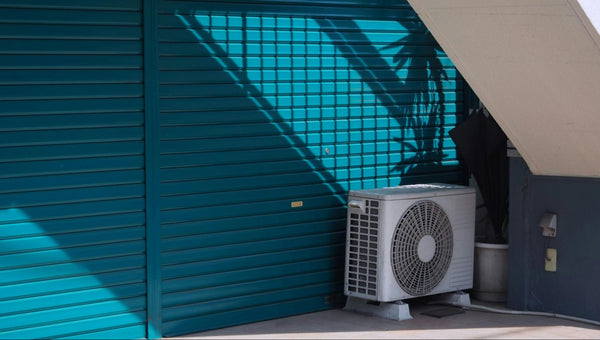
Portable Air Conditioner vs. Window AC: Which Is Better?
